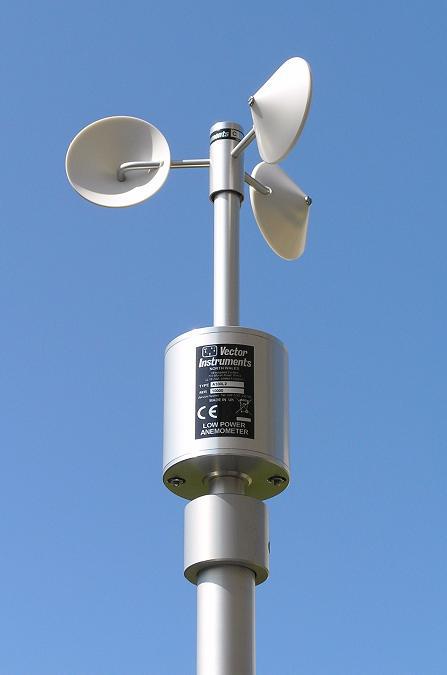Picking the Right Anemometer: A Comprehensive Acquiring Guide
Exploring the Features and Benefits of Anemometers for Climate Fanatics and Professionals
From mug anemometers to sonic anemometers, each kind brings its special set of applications and benefits, losing light on different aspects of climatic conditions. As we delve right into the functions and benefits of anemometers, a much deeper understanding emerges not just of prevailing weather sensations however likewise of the broader effects for industries like wind power production and environmental research.
Value of Anemometers in Weather Surveillance
Anemometers play a critical role in climate monitoring by offering precise measurements of wind speed, helping in projecting and understanding climate patterns. These instruments, ranging from standard mug anemometers to modern-day ultrasonic anemometers, are important for meteorologists, researchers, and weather condition fanatics alike.

Kinds Of Anemometers and Their Applications
The most usual types of anemometers consist of cup anemometers, vane anemometers, hot-wire anemometers, and ultrasonic anemometers. Mug anemometers consist of 3 or four cups installed on straight arms that rotate with the wind, gauging its speed. Vane anemometers, on the other hand, make use of a freely revolving vane to align with the wind instructions, providing both wind rate and instructions dimensions.
Mug anemometers are appropriate and robust for basic climate monitoring, while vane anemometers are favored for directional measurements. Ultrasonic anemometers are non-intrusive and provide high accuracy, usually used in research study and specialized weather condition tracking applications.
Benefits of Making Use Of Anemometers in Projecting
In weather forecasting, the utilization of anemometers uses indispensable benefits for improving the accuracy of weather forecasting. Anemometers determine wind speed and direction, supplying essential data for predicting weather condition patterns. By integrating wind data right into projecting designs, meteorologists can better recognize the movement of climate systems, prepare for modifications in weather, and concern a lot more precise projections.
In addition, anemometers play an essential function in evaluating potential climate risks. Monitoring wind rates assists forecasters predict extreme weather condition events such as cyclones, twisters, and winter season storms with better accuracy. This very early warning system makes it possible for authorities to provide prompt informs and apply needed precaution, reducing the threats to life and property.
Furthermore, anemometers help in optimizing sustainable energy production. By assessing wind patterns, meteorologists can determine ideal locations for wind farms and forecast energy output, adding to the efficient generation of wind power.

Anemometers in Wind Energy Manufacturing
Provided the essential role anemometers play in offering precise wind information for climate forecasting and hazard analysis, their significance encompasses the realm of wind energy manufacturing. Anemometers are crucial tools in the area of wind energy, where the dimension of wind rate and instructions is crucial for figuring out the usefulness and efficiency of wind turbine installations. By accurately measuring wind speeds at differing heights, anemometers help optimize the placement and design of wind generators to optimize power result.
In wind ranches, anemometers are purposefully positioned to accumulate real-time wind information that is made use of to examine the prospective energy manufacturing of a website. This data contributes in figuring out the economic practicality of wind energy tasks and in forecasting energy generation to ensure grid security. Furthermore, anemometers aid in keeping an eye on wind conditions to optimize generator performance, stop damage from high winds, and ensure the safety of employees operating in the vicinity of wind turbines.
Enhancing Climate Comprehending With Anemometers

Anemometers play a key function in improving our understanding of microclimates. These localized climate problems can differ substantially from wider local forecasts, making it vital to have accurate data for particular areas. anemometer. By strategically positioning anemometers in numerous places, researchers can gather detailed details on exactly how wind behaves in different surfaces, metropolitan atmospheres, or bodies of water
Furthermore, anemometers add to boosting weather condition forecasting designs by supplying real-time data on wind behavior. This details is especially valuable for forecasting extreme weather condition occasions, optimizing farming techniques, and sustaining sectors like air travel and maritime navigating. In general, anemometers are vital tools that enable us to dive deeper right into the complexities of climate systems, eventually news resulting in even more accurate forecasts and better-informed decisions.
Conclusion
In final thought, anemometers play an essential function in weather tracking and projecting by measuring wind speed and direction. Anemometers likewise have applications in wind power manufacturing, more highlighting their significance in both weather forecasting and renewable power markets.
From mug anemometers to sonic anemometers, each kind brings its distinct set of advantages and applications, dropping light on different elements of climatic problems. These tools, varying from typical cup anemometers to contemporary ultrasonic anemometers, are crucial for meteorologists, researchers, and weather enthusiasts alike. The most common types of anemometers include cup anemometers, vane anemometers, hot-wire anemometers, and ultrasonic anemometers. Cup anemometers are durable and important site ideal for general weather monitoring, while vane anemometers are favored for directional measurements. Anemometers are essential tools in the area of wind energy, where the measurement of wind speed and instructions is crucial for identifying the feasibility and efficiency of wind turbine setups.